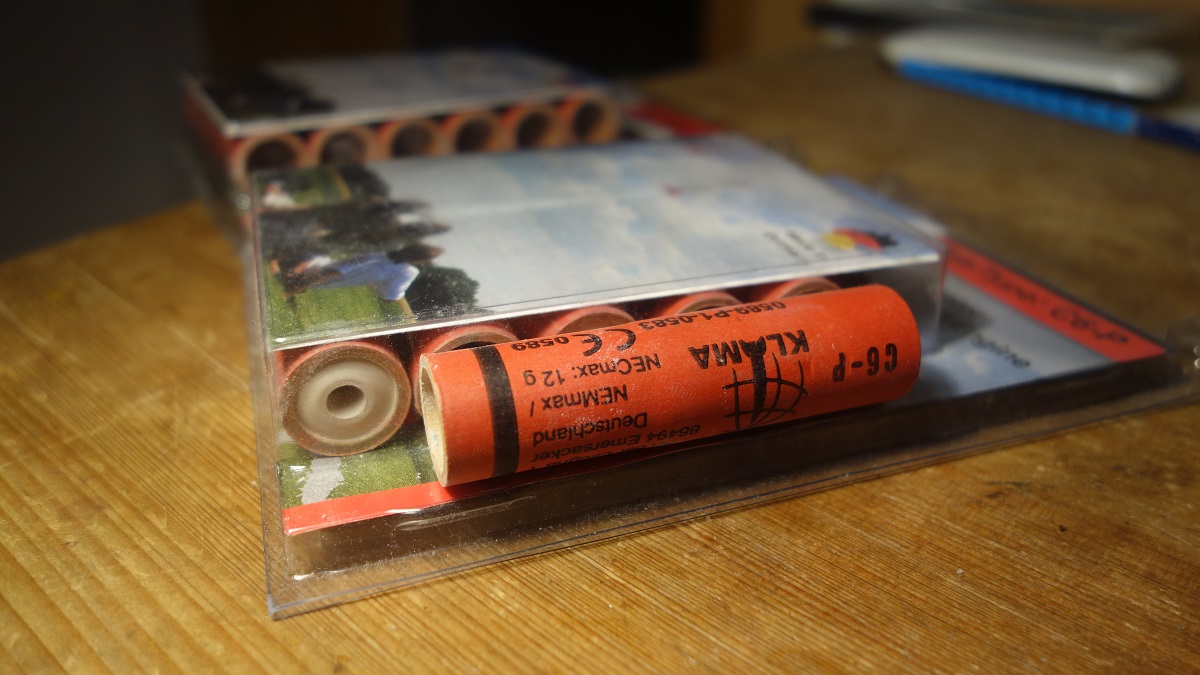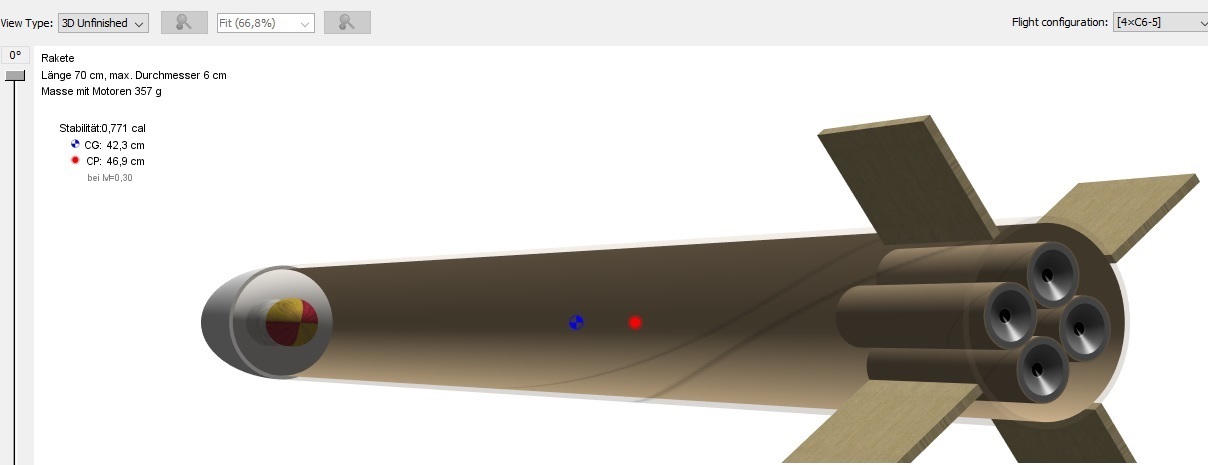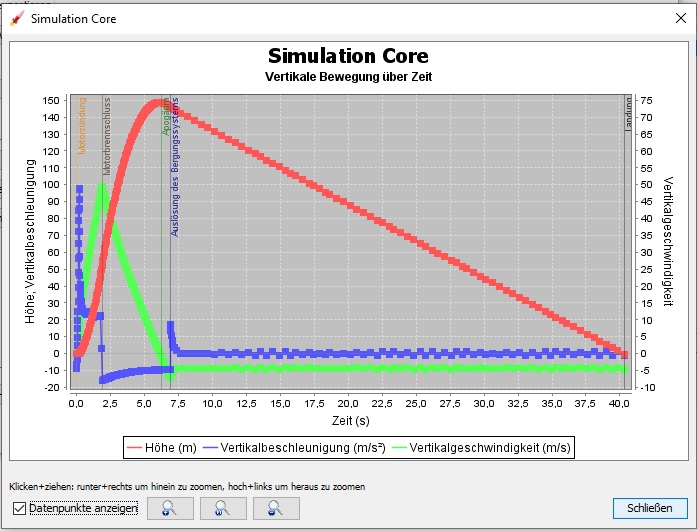
STEP 1: PLANNING THE ROCKET
So far we have an idea how the rocket should look like and how big it will be, but that's not yet a plan! A real plan for building a rocket includes at least answers to the following questions:
- What will be the overall mass of the rocket at takeoff?
- Which motors do I need to be able to lift off?
- How fast will it be when it leaves the ramp? (I'll tell you why this is important)
- Will it fly stable?
- How fast and how high will it go?
- How do I bring it back to Earth in one piece?
Some Basics About Model Rocketry
Even a model rocket is a rocket. It burns fuel to generate trust which propells the rocket forward. One main difference is that model rocket come down on parachutes which get deployed by an ejection charge which is part of the engine. To understand how much trust you get from the engine and when it will fire the ejection charge, you need to read the engine type description.
To read model rocket engines, you just need to understand the simple code they use in the manufacturing process. It consists of a letter and two numbers. The letter, at the front of the code, corresponds to the total amount of energy contained in the motor, this is measured in Newton-seconds. The first number, directly beside the letter, is the average thrust of the motor. The higher the number the faster it burns through the propellant, the more thrust per second. The third number, located after the dash, represents the time delay from ignition to the time the ejection charge fires and deploys the parachute.
German law in general restricts us to low power engines, for more powerful rocket you need a special license. For my purpose low power rocket engines of type A, B and C will do the job. They provide between 1 and 20 N·s (newton * second) total impulse. 10 Ns means that a engine may provide 10 N of thrust for 1 second or e.g. 5 Newton for 2 seconds.
Engine Types: A 1.26-2.50 N·s B 2.51-5.0 N·s C 5.01-10 N·s D 10.01-20 N·s
Engines
I plan to use engines of the type C6-5 and C6-0. Both engine types provide 10 Ns total impulse, 6 N of average thrust and the C6-5 has a 5 seconds delay from ignition to parachute ejection. The C6-P has no ejection charge.

Open Rocket
Having set the cornerstones for size and engines, it is still not clear if this setup will work. The easiest way to find out if this rocket could fly, is to use a simulation software. I'm really happy that there is "Open Rocket", a freeware program which lets you not only design your rockets, but also simulates flights with given engine configurations and weight estimations. What a cool piece of software!
The Side Boosters
After playing around a while in Open Rocket I found the following configuration:


Open Rocket predicts a takeoff mass of 357 g including engines, which is fine for a total thrust of 24 N. We will get an acceleration of 123 m/s*s or little more than 12 g. This will make sure that the rocket is fast enough to fly stable after it has reached the end of the 1 meter launchrod. Unfortunately the stability is not very high with just 0.77 caliber. But to get to this stability I already had to add a 30g weight into the nose cone and to put 4 fins at the end of the rocket (which you will not find on the real Falcon Heavy). If I find out that the rocket is unstable (by just test- flying it), the only way to increase stability is to add mass to the nose cone. I can't add larges fins since the boosters are too close together.

We will get to an apogee of 200 meters and the 70 cm parachute will provide us a soft landing with only 3,87 m/s. The optimum delay is calculated with 4.8 seconds which fits pretty well with the 5 seconds delay of the C6-5 engine. Please keep in mind that the weight is until now just an estimation of the simulation software. It's up to me to meet the calculated numbers.
The Core Stage
Here the Open Rocket configuration for the Falcon Heavy core stage:


Open Rocket predicts a takeoff mass of 509 g including engines which is still fine for a total thrust of 24 N. And in this case the side boosters will provide extra thrust. For the core Stage alone we will get an acceleration of 98 m/s*s, which would be just sufficient (without the side boosters). Unfortunately even here the stability is below 1 caliber. We will need to test fly this thing to find out if it will work or not.

We will get to an apogee of 150 meters and the 90 cm parachute will provide us a landing speed of 4,13 m/s. The optimum delay is calculated with 4.35 seconds which fits not really well with the 5 seconds delay of the C6-5 engine but with the extra boost from the side engines we will reach higher speeds and it will be in a acceptable range (firing too late is ways better than firing too early).